This year, the Easy Reading Project took an active part in the AAATE in Bologna. After three days with many interesting presentations, discussions and talks about the global challenges in Assistive Technology, we want to summarize the contents and our impressions from the workshop “User Participation in Software Development” for everyone interested.
The Easy Reading project hosted the workshop “User Participation in Software Development” on 29.08.19. We invited various research projects currently funded by the EU, to present their work. It was interesting to hear about different approaches and methods for user participation of people with different impairments. The user group in the individual projects varied widely from people with Multiple Sclerosis to people with profound intellectual and multiple disabilities. But they all focused on the same question “How can users be involved in all stages of the development process, in the development of products and services?”.
The workshops were a great opportunity for everyone to network and to share their experiences.
Here, some of the projects approaches are presented:
Participation of Users with Disabilities in Software Development Projects (Easy Reading)
Susanne Dirks (TU Dortmund) opened the workshop by presenting how users with disabilities are involved in the development of the Easy Reading software. She presented concrete methods and examples of how active user participation can be successfully implemented.
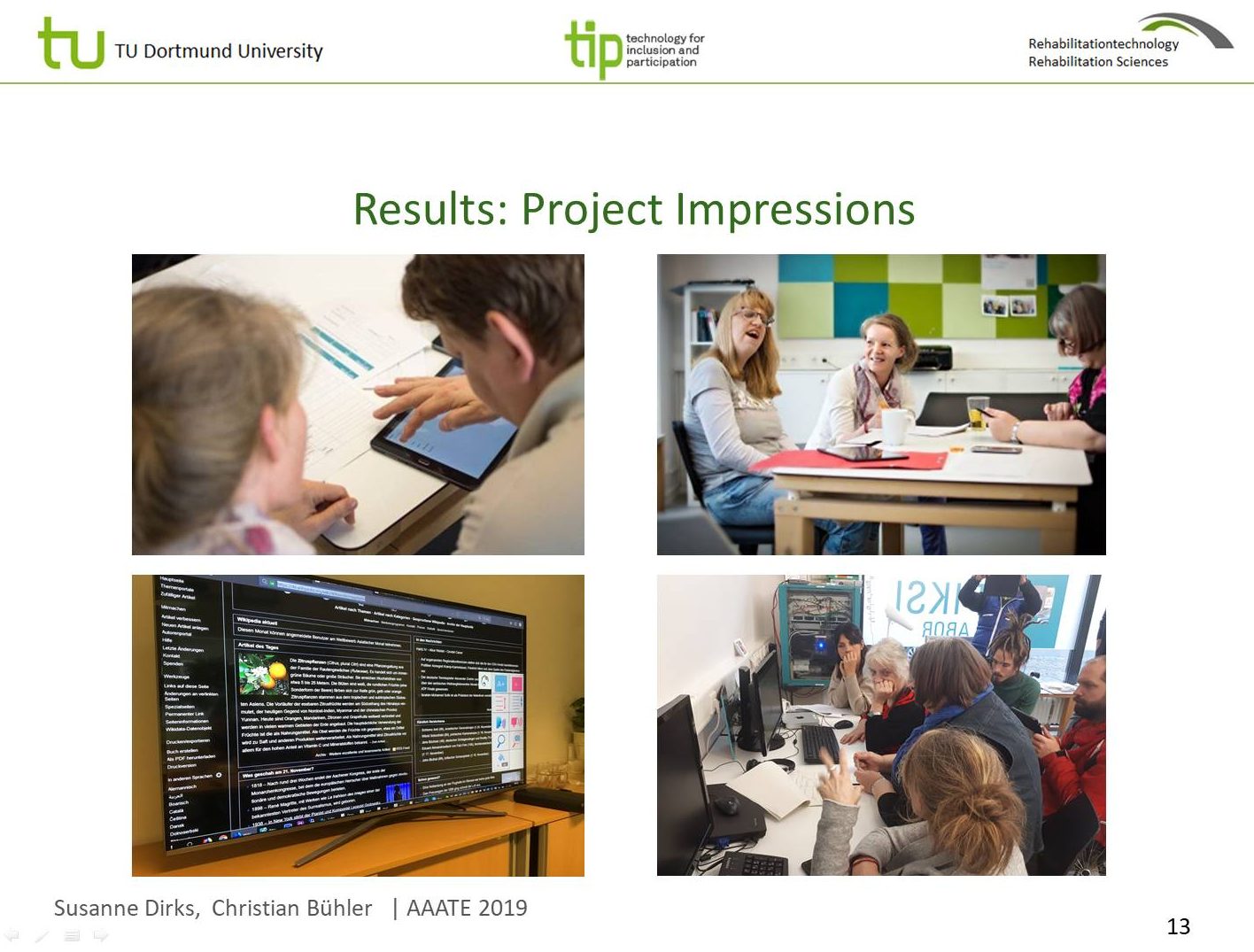
In her conclusion she emphasized the importance of user involvement for the usability of software. “We have repeatedly observed that our assumptions as researchers and developers about the needs of our user’s, were many miles away from the real needs of our target group.” (Dirks, AAATE 2019) The development of guidelines and methods is necessary to reduce negative consequences resulting from the challenges in participatory software projects.

E-Inclusion of People with Cognitive Disabilities Inclusive Collaboration in Research and Development for Improved Cognitive Accessbility (Easy Reading)
Cordula Edler (TU Dortmund) presented the IPAR-UCD concept that builds the foundation for the user involvement in the Easy Reading project. The innovative approach is a combination of Inclusive Participatory Action Research (IPAR) and User-Centred Design (UCD). The IPAR-UCD concept addresses the peer researchers’ need for support and can help software designers and developers to better meet the requirements of users with cognitive disabilities through an inclusive user-centered design process.
Edler concluded that “This design-based intervention has shown that it is possible to involve people with cognitive disabilities in R&D as testers but also as developers and idea providers.” (Edler, AAATE 2019)

Assistive Technology for People with Profound Intellectual and Multiple Disabilities (INSENSION)
The INSENSION project focuses on better understanding of the behavior signals (e.g. specific body movements or vocalizations) of people with profound intellectual and multiple disabilities (PIMD) by using the advances of unobtrusive technological recognition tools.
The project used focus group workshops (relatives, professional caregivers and ICT specialist) to define application use cases.
In the presentation the project focused on the different workshop phases to explain how they developed three final application use cases:
- Persona: Who are we designing for?
- Problem: Which situations are most challenging for people with PIMD and their caregivers?
- Dreamer: What do we want and need? (no matter if it’s realistic or not)
- Realist: How can we apply this idea in reality?
- Critic: What could be wrong with idea?
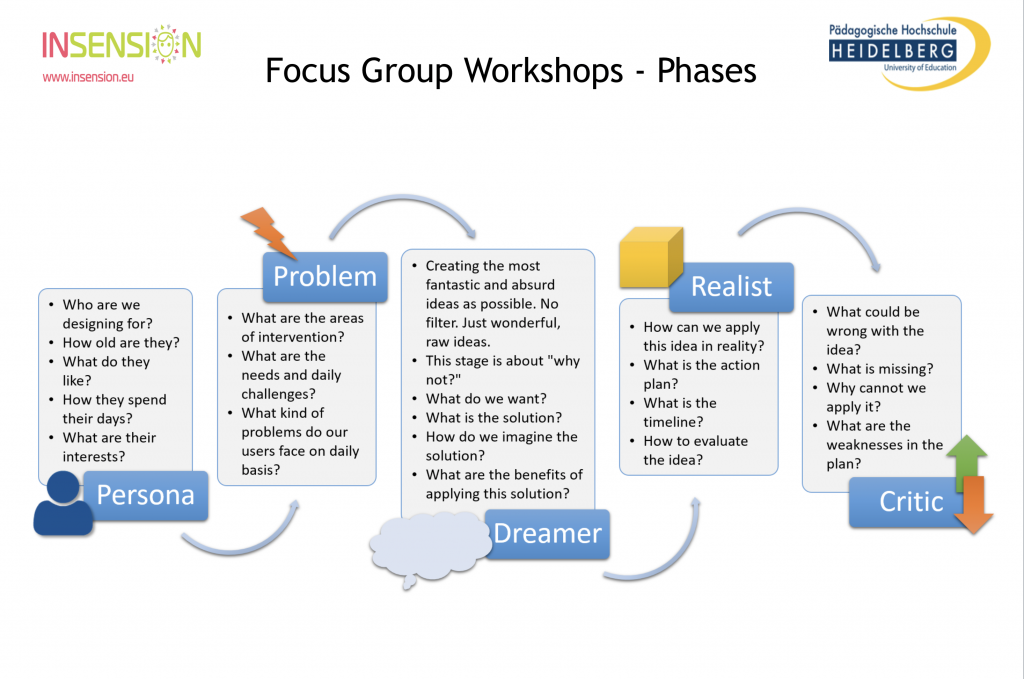
The project illustrated the relevance of including later users in the development process to define the user’s particular needs and wishes and to increase the usability of the product.
You can learn more about the INSENSION project on their website:
Validation of Technological Out- comes of Gaming Software based on a Participative Research Methodology (Arches Project)
The objective of the ARCHES project is to understand and address issues relating to cultural access within museums for people with sensory and learning access needs.
The project talked about their participatory research approach with research groups made up of people with different access preferences. The Participants’ input was passed on to the technology partners, who developed and improved an inclusive video game based on this information.
The main focus of the workshop was to explore the tensions that arose during the development process between the different groups involved in the project (museums, technology partners and users)

Although the project is ongoing and final conclusions are yet to be made, they concluded that the participatory practice has led to improvements in software design and development. But the project recommends that participatory groups are involved in the conception of future games from the earliest stage possible, rather than being introduced to the game once it has been already designed in rough.
Here you can find the ARCHES website:
https://www.arches-project.eu/
Participatory Methodology, Inclusive Control Systems and Inclusive Technical Capital Developed by Engineering Undergraduates and Teenagers from a Marginalised Community in Mexico
The University of Bath (UK) reviewed an education project in Monterrey, Mexico, which was designed to teach principles of algorithms and control systems to engineer students and to promote inclusion and accessibility in systems design.
The methodology used to develop the participatory teaching was Grounded Methodology (GM), an adapted form of Grounded Theory (GT).
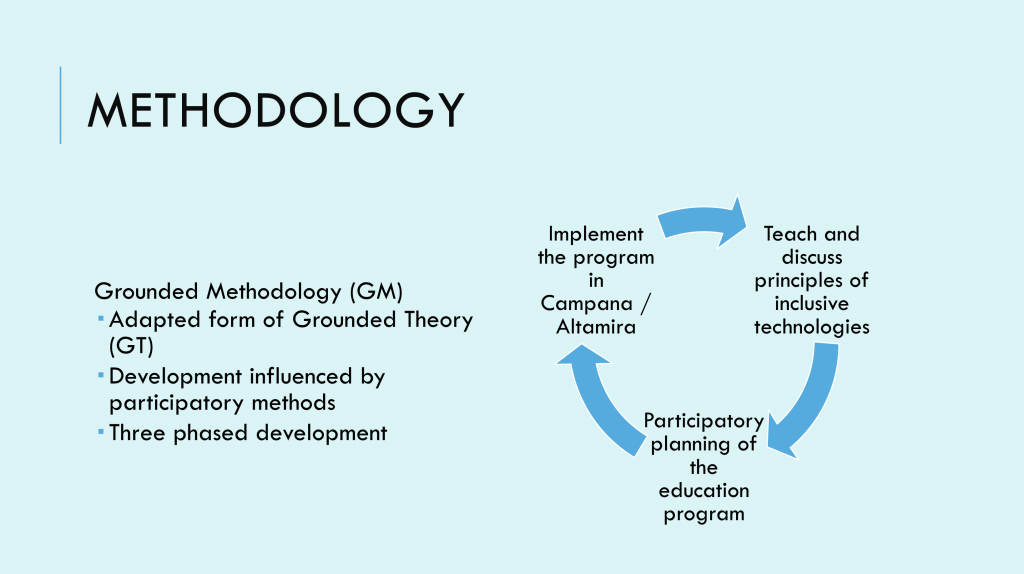
All participants were included in the development, design and evaluation process.
The project presented three different phases:
- Phase 1: Teaching students about inclusive technology
- Phase 2: Development of discrete sessions and teaching of inclusive control systems workshops
- Phase 3: Delivery of the workshops to school children
In conclusion though long-term benefits can’t be measured, the project showed that the students and school children engaged with the notion of designing inclusive technologies, and related inclusion and control systems design. The different phases helped the undergraduates to learn inclusive steps: “About inclusive technologies, I think the easier you break down the information the better, if you want to reach more people, you have to aim for simplicity.” (Participant)
Starting the innovation path for a fatigue management app for people with Multiple Sclerosis (FACETS)
FACETS is an evidence-based face to face course that combines energy conservation and cognitive behavioral approaches for people with Multiple Sclerosis. In the project a combined clinical, academic and commercial developer team used evidence-based components to develop app content.
The project shared their methodical approach on how to involve a user group in the development process when there’s no budget to code an app as a prototype for testing.
Three key steps were presented:
- Review of published evidence
- Knowledge of intervention delivery
- Dialogue with People with MS and health MS specialists
The app concept and designs were explored with users on a paper prototype (picture below) and confirmed the need for a FACETS app. In addition to many aspirational features importantly it was found that professionals and people with MS did not agree on some key aspect.
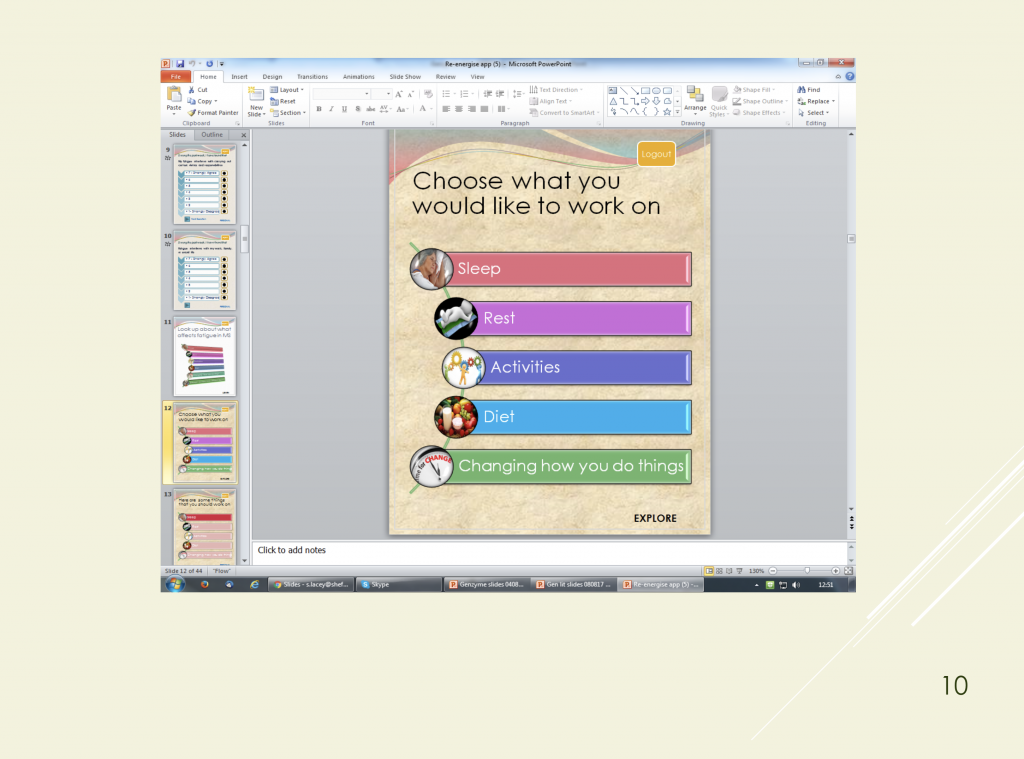
The project ended the presentation with the conclusion “We maximized our starting knowledge before we conduct “expensive” research.”
Read more about FACETS:
https://www.ms.org.au/support-services/education/facets.aspx
Workshop Programme
Here you can find a list of the other projects that were presented in our workshop:
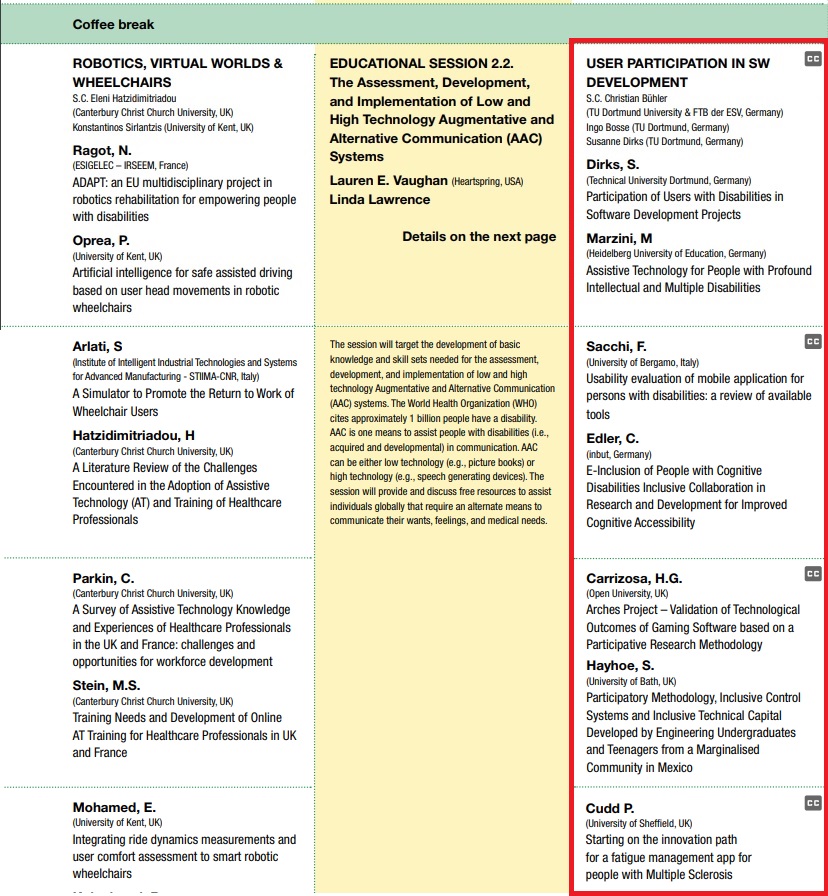
If you want learn more the projects, you can download the proceedings on the AAATE website:

Comments are closed, but trackbacks and pingbacks are open.